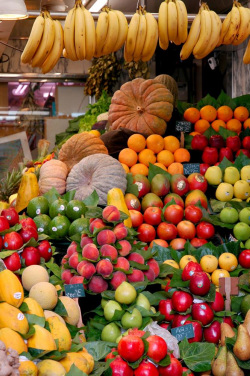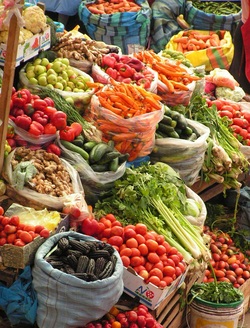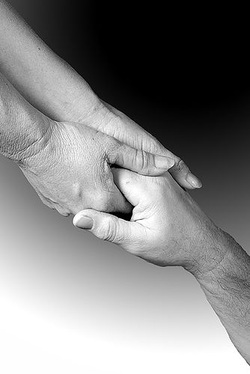Before seeing how you can use food to treat or prevent diabetes, here is a quick look at what this condition is. The fuel that keeps our bodies running is sugar. Doctors call it glucose. Soon after we eat, glucose enters into blood-stream and is carried to individual cells throughout the body. Before it can enter these calls, however, it requires the presence of a hormone called insulin. And therein lies the problem.
People with diabetes either don't produce enough insulin or the insulin they do produce doesn't work efficiently. In either case, all that glucose in the bloodstream not able to get inside the cells. Rather, it moves in the bloodstream, getting more and more concentrated as time goes by. Not only do individual cells go hungry, which cause fatigue, dizziness and other symptoms, but all that concentrated sugar becomes toxic and can damage kidneys, nerves, eyes, heart and immune system.
The most serious form of diabetes, and fortunately, the least common is the Type I, or insulin-dependent. It occurs when the body makes little or no insulin of it's own. People with Type I diabetes must take insulin in order to replace their own missing supplies.
Far more common is Type II, or non-insulin-dependent diabetes. people with this condition produce some insulin, but generally not enough.
The Healing Power of Food
Experts have long recognized that what you eat can play a critical role both in preventing and controlling Type II diabetes. Just as a bad diet can help cause diabetes, a good one can help control or even prevent it. For instance, there have been many studies done on this subject and one of them was researching native Hawaiian diet. This diet consists mainly of high-figer, high-carbohydrate foods such as taro, greens and fruits and includes plenty of fish. It was found to be extremely effective.
Carbs
Carbohydrates, which are found in most foods except meat, fish and poultry, are the body's main source of energy. There are two types. Complex carbohydrates called starches, include foods like rice, beans, potatoes, and pasta. Simple carbohydrates, called sugars, include all natural sugars found in milk, fruits, and vegetables as well as white table sugar and honey. The body turns both complex and simple carbohydrates into glucose, which is either immediately converted into energy or stored until needed.
Most people with diabetes should eat a diet that's higher in carbohydrates, particularly the complex kind. A helpful way to plan your meals is to use system called carbohydrate counting.
Fiber
A high-fiber diet has been shown to relieve everything from constipation to heart disease. Research suggests that it can also play a powerful role in controlling blood sugar.
There are two types of fiber, soluble and insoluble. Insoluble fiber, which does not dissolve in water, speeds food through intestine, preventing constipation. It's the soluble form of fiber, that stabilizes blood sugar. Because it forms a gummy gel in the intestine, soluble fiber helps prevent glucose from being absorbed into the blood too quickly. This in turn helps keep blood sugar levels from rising or dipping too drastically.
Its not hard to increase your intake of soluble fiber. Eating more fruits and legumes will naturally give you more of it. So will oat bran or oatmeal.
Vitamins
Fruits and vegetables rich in vitamin C and E will help with healthier eyes, nerves and blood vessels. Those vitamins are known as antioxidants. They help protect body's cells from free radicals, naturally occurring. Latest research also pointing that vitamin C helps insulin penetrate cells. Oranges and grapefruits are excellent sources of vitamin C, but they are not the only one's. Cooked broccoli, cantaloupe, red sweet pepper are also loaded with this vitamin.
Vitamin E, which is good for the heart, may be particularly important for people with diabetes. The latest research indicating that Vitamin E helps insulin carry sugar from the blood stream into cells in muscles and tissues.
Wheat germ is an excellent source of vitamin E. Other good sources of this vitamin include sweet potatoes, avocados, shrimp and chickpeas.
Chrome
it's not just vitamins that can help control diabetes. The trace mineral chromium, found in broccoli, has been shown to improve body's ability to regulate blood sugar..
Magnesium
Experts estimate that many people with diabetes are low in the mineral magnesium. Good sources of magnesium are oysters, oily fish and long grain brown rice.
Putting it all Together
Treating and preventing diabetes with foods involves more than just eating a few good foods. it's really a whole diet in which all the separate elements - fiber, vitamins, minerals, and so forth - are brought together in one good plan. You might consider working with a dietitian to develop a meal plan that promotes blood sugar control.
People with diabetes either don't produce enough insulin or the insulin they do produce doesn't work efficiently. In either case, all that glucose in the bloodstream not able to get inside the cells. Rather, it moves in the bloodstream, getting more and more concentrated as time goes by. Not only do individual cells go hungry, which cause fatigue, dizziness and other symptoms, but all that concentrated sugar becomes toxic and can damage kidneys, nerves, eyes, heart and immune system.
The most serious form of diabetes, and fortunately, the least common is the Type I, or insulin-dependent. It occurs when the body makes little or no insulin of it's own. People with Type I diabetes must take insulin in order to replace their own missing supplies.
Far more common is Type II, or non-insulin-dependent diabetes. people with this condition produce some insulin, but generally not enough.
The Healing Power of Food
Experts have long recognized that what you eat can play a critical role both in preventing and controlling Type II diabetes. Just as a bad diet can help cause diabetes, a good one can help control or even prevent it. For instance, there have been many studies done on this subject and one of them was researching native Hawaiian diet. This diet consists mainly of high-figer, high-carbohydrate foods such as taro, greens and fruits and includes plenty of fish. It was found to be extremely effective.
Carbs
Carbohydrates, which are found in most foods except meat, fish and poultry, are the body's main source of energy. There are two types. Complex carbohydrates called starches, include foods like rice, beans, potatoes, and pasta. Simple carbohydrates, called sugars, include all natural sugars found in milk, fruits, and vegetables as well as white table sugar and honey. The body turns both complex and simple carbohydrates into glucose, which is either immediately converted into energy or stored until needed.
Most people with diabetes should eat a diet that's higher in carbohydrates, particularly the complex kind. A helpful way to plan your meals is to use system called carbohydrate counting.
Fiber
A high-fiber diet has been shown to relieve everything from constipation to heart disease. Research suggests that it can also play a powerful role in controlling blood sugar.
There are two types of fiber, soluble and insoluble. Insoluble fiber, which does not dissolve in water, speeds food through intestine, preventing constipation. It's the soluble form of fiber, that stabilizes blood sugar. Because it forms a gummy gel in the intestine, soluble fiber helps prevent glucose from being absorbed into the blood too quickly. This in turn helps keep blood sugar levels from rising or dipping too drastically.
Its not hard to increase your intake of soluble fiber. Eating more fruits and legumes will naturally give you more of it. So will oat bran or oatmeal.
Vitamins
Fruits and vegetables rich in vitamin C and E will help with healthier eyes, nerves and blood vessels. Those vitamins are known as antioxidants. They help protect body's cells from free radicals, naturally occurring. Latest research also pointing that vitamin C helps insulin penetrate cells. Oranges and grapefruits are excellent sources of vitamin C, but they are not the only one's. Cooked broccoli, cantaloupe, red sweet pepper are also loaded with this vitamin.
Vitamin E, which is good for the heart, may be particularly important for people with diabetes. The latest research indicating that Vitamin E helps insulin carry sugar from the blood stream into cells in muscles and tissues.
Wheat germ is an excellent source of vitamin E. Other good sources of this vitamin include sweet potatoes, avocados, shrimp and chickpeas.
Chrome
it's not just vitamins that can help control diabetes. The trace mineral chromium, found in broccoli, has been shown to improve body's ability to regulate blood sugar..
Magnesium
Experts estimate that many people with diabetes are low in the mineral magnesium. Good sources of magnesium are oysters, oily fish and long grain brown rice.
Putting it all Together
Treating and preventing diabetes with foods involves more than just eating a few good foods. it's really a whole diet in which all the separate elements - fiber, vitamins, minerals, and so forth - are brought together in one good plan. You might consider working with a dietitian to develop a meal plan that promotes blood sugar control.
We live in an interesting times, as far as diabetes concern - there is a new approach that will help many people to beat it and bring it under control. Gone are the days when a doctor handed you a list of what you could and couldn't eat - the same he gave to everyone else who came in the door. New evidence has significantlly altered this "one-size-fits-all" dietary approach to this condition.
Science discovering that in fact, it's not unusual these days for two people with diabetes, even if they are the same age, same weight, and same overall condition, to have totally different diets for controlling it.
Yet one aspect of diabetes has stayed the same. Diet - what you eat, and in some cases, what you don't - is at the heart of any treatment plan. Along with maintaining a healthy weight and getting regular exercise, eating right helps keep blood sugar and fats at steady levels, which is a key to keeping problems under control.
Science discovering that in fact, it's not unusual these days for two people with diabetes, even if they are the same age, same weight, and same overall condition, to have totally different diets for controlling it.
Yet one aspect of diabetes has stayed the same. Diet - what you eat, and in some cases, what you don't - is at the heart of any treatment plan. Along with maintaining a healthy weight and getting regular exercise, eating right helps keep blood sugar and fats at steady levels, which is a key to keeping problems under control.



